Next-Gen AI Design: What We Can Learn From Today’s AI Design Leaders
By Mikaela Lipsky, January 9, 2025
As AI supercharges our tools and changes our relationship with our work, trust-worthy design matters more than ever. Designers are central to this shift, redefining how these interfaces drive user love and build lasting, successful companies.
At True, we’ve been kicking around a few big questions: Do UIs fade altogether in an AGI-driven world where outcomes and results take center stage? What role do designers play in revealing AI’s potential beyond chatbots? And as LLMs supercharge productivity, how does this whole new landscape reshape design teams and the role of the creator?
Design in the Age of AI
To find answers to some of our questions, we turned to our community, as we often do. Our Design Partner and Head of Platform Jeff Veen and our newest Venture Partner Helen Min hosted an AI Design Leaders Lunch & Panel featuring Perplexity Head of Design Henry Modisett, Anthropic (Claude) Head of Product Joel Lewenstein, and Chroma Founding Designer Mads Frechette. We were joined by 40 product designers with lots of curiosity and expertise, setting the stage for collective learning.

To kick off, panelists dove into what’s different about product design in an AI world compared to five years prior. It’s a space where bold execution and parallel work aren’t just possible — they’re essential. As Henry put it, “design teams are practically building houses on volcanoes,” requiring the balance of an increasing number of immediate needs with long-term platform and product stability. “Design, in the age of AI, is becoming democratized and infinitely horizontal across every function while simultaneously raising the bar for what great means,” he added.
User interfaces, as an experience, are also shifting. We’re witnessing an evolution toward products that deliver output-ready value rather than lower-lift productivity hacks and collaboration interfaces. Mads Frechette thoughtfully pointed out that interfaces now look, feel, and behave like the world around us. We can now build software that understands intent and drives outcomes, rather than simply managing a web of user requests and complexity.
All of this to say, “Software is getting more and more powerful but also getting simpler at the same time,” added Henry. We’re seeing a reduction in complexity without sacrificing value – in fact, we’re delivering more value than ever before. He noted that the software development process is becoming more colloquial and approachable to the many rather than the few.
Maintaining a Competitive Edge
Sounds great so far, yes? Lots of innovation spanning everything from UX design, to democratized access, to product development. But how do these AI companies stay competitive as technical edges become less defensible?
As Joel Lewenstein commented, “The world needs more code to write more code,” — and the same goes for design. Faster design processes may decrease technical defensibility, but it speeds up innovation and products getting to market, reshaping the market’s competitive landscape. And, of course, real-life human design talent remains a key advantage and driver for long-term success, alongside creativity, brand affinity, and distribution. To that end, Henry and Joel both noted that designers at large feel universal anxiety about the potential of being replaced by generative design tools.
“The reality is that in most orgs, design is always underfunded and becomes a bottleneck in the development process. Powerful generative tools can instead bring about much more abundant and higher quality output – something almost all teams are desperate for,” shared Joel.
All of these learnings were amplified through thoughtful questions from the group, the connections sparked in the room, and the support attendees shared with one another.

“It was really special to bring together former colleagues from my time at Quora and Meta to talk about the future of design at AI-native companies,” shared Helen. “Hopefully this conversation sparked new ideas and encouraged everyone to keep pushing the boundaries of what’s possible with product design in AI.”
We look forward to hosting more AI-centered events for the builders, designers, founders, and operators in our community and beyond in 2025. Sign up for the True Newsletter to receive future invitations. And we hope to see you there.

